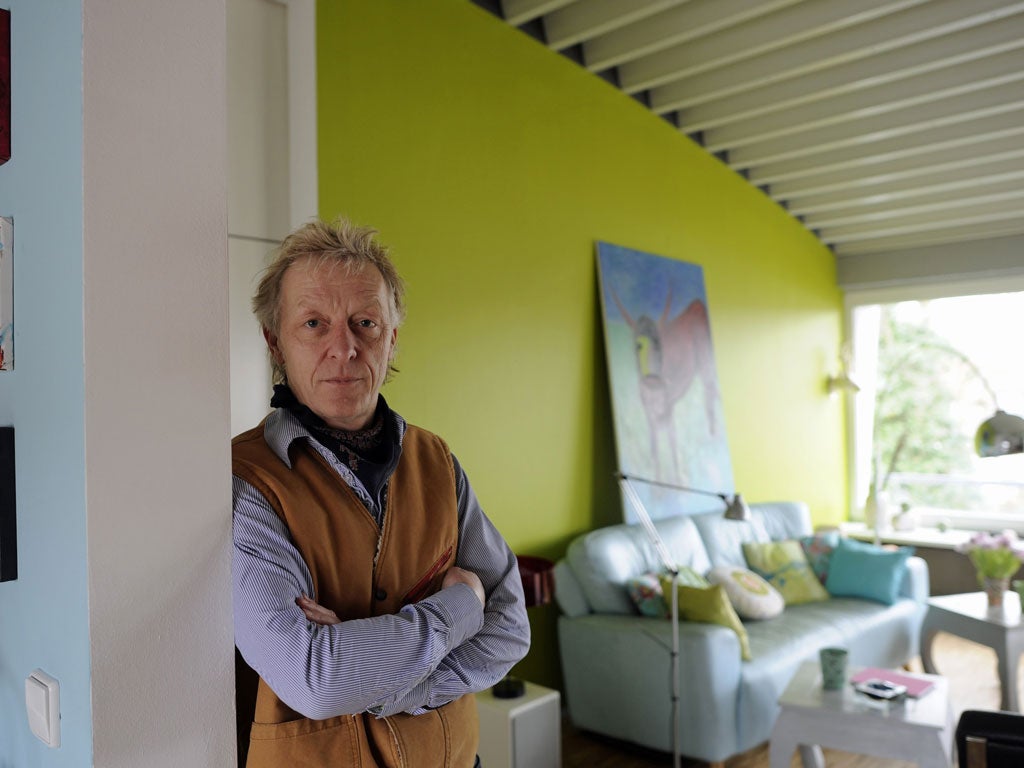Built by forced labour, but Nazi bunkers are now trendy homes

Your support helps us to tell the story
From reproductive rights to climate change to Big Tech, The Independent is on the ground when the story is developing. Whether it's investigating the financials of Elon Musk's pro-Trump PAC or producing our latest documentary, 'The A Word', which shines a light on the American women fighting for reproductive rights, we know how important it is to parse out the facts from the messaging.
At such a critical moment in US history, we need reporters on the ground. Your donation allows us to keep sending journalists to speak to both sides of the story.
The Independent is trusted by Americans across the entire political spectrum. And unlike many other quality news outlets, we choose not to lock Americans out of our reporting and analysis with paywalls. We believe quality journalism should be available to everyone, paid for by those who can afford it.
Your support makes all the difference.Rainer Mielke, a German architect, lives in a luxurious, light-filled penthouse atop a Nazi bunker in which his elderly neighbours remember sheltering during the Second World War. A pioneer of the art of converting grim structures into living or working spaces, his work is set to increase as Germany ramps up sales of these above-ground forts, originally designed as air-raid shelters.
There's a catch: nearly all were built with forced labour. And as bunkers become hot property, critics warn people against treating them like any other real estate without acknowledging their past.
"At the beginning, the authorities thought I was a bit daft," said Mr Mielke, who spent six years in the 1990s begging the property office in the northern city of Bremen to let him buy the bunker he now lives in. "They didn't think anyone would really want to live in a bunker," said Mr Mielke, who was eventually allowed to build on top of the bunker in one of Bremen's most chic districts on condition that it could still be used if there were an attack. He was on to something. After early tentative sales efforts, Germany is now stepping up a campaign to sell the structures and has now launched a competition for conversion ideas.
In 2007, Germany decided it was an anachronism to keep up the 2,000 bunkers, built both above and below ground before and during the Second World War and in the Cold War. Some 220 above-ground bunkers were the first to be decommissioned. Blowing up the concrete fortifications, often located in densely populated inner cities, was not an option, and so they began to be sold. In addition to bringing in revenue, it ended the maintenance costs which could reach hundreds of thousands of euros a year for bigger bunkers. Only 50 of the bunkers have been sold so far, according to the Bima Federal Agency for Real Estate.
The first conversions have shown that these huge, windowless boxes with ceilings up to 4m thick can become striking living spaces. "You can plan freely because there are no supporting walls," said Mr Mielke, who converted the whole of his first bunker once it was decommissioned. "But it requires a lot of special knowledge."
Mr Mielke kept his first bunker, filling it with paintings and designer furniture, but seized on the idea of bunker conversion as a hot business proposition. Since then, his architecture studio has converted 13 others. The architect says his first was a bargain, but prices have risen tenfold. Prices, all at auction, have ranged from €100,000 to €400,000, BImA says. Conversion can double their value.
Bima's Gerd Oligschleger has addressed concerns about forced labour by pointing out that much of Germany's infrastructure, from roads to railways, was built by the Nazis in similar conditions.
One of Bremen's bunkers is Germany's largest. "Valentin" is where more than 1,400 prisoners from across Europe died during its construction. This bunker is not for sale, but one section could be rented to defray the maintenance costs, estimated at about €300,000 a year. Critics say that renting part of the building could destroy the sense of its immensity, which in turn conveys the enormity of the Nazis' military aspirations.
Reuters
Join our commenting forum
Join thought-provoking conversations, follow other Independent readers and see their replies
Comments